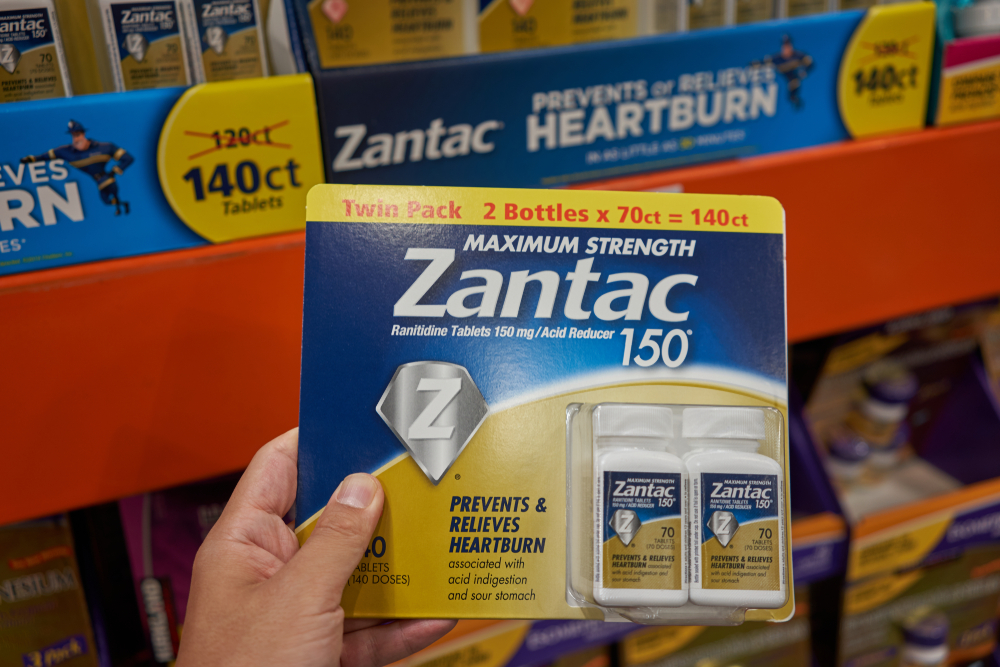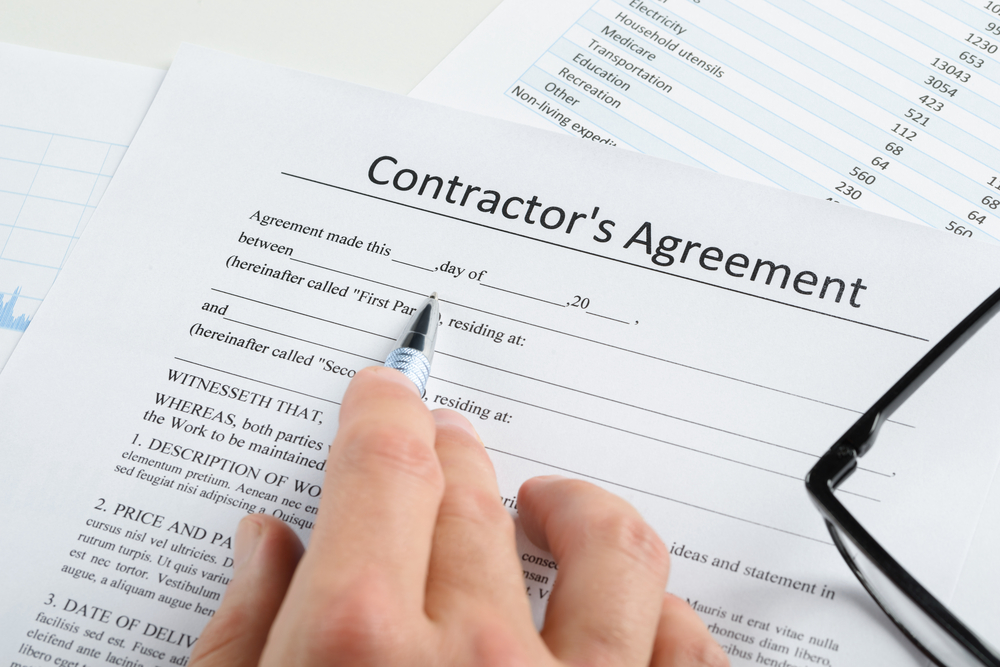If you or a loved one is experiencing pain, discomfort, or other symptoms after a hernia mesh surgery, you might be entitled to compensation. Symptoms can take years or even decades to develop, so always be aware of pain or discomfort in your abdominal region. Read on to learn more about hernia mesh products, lawsuits, and complications.
- What Is a Hernia Mesh?
- What Are the Symptoms of a Hernia Mesh Complication?
- Current Major Lawsuits and Investigations
- What Should I Do If I Have Been Affected by Hernia Mesh?
- How to Know If I Qualify to Be Part of a Hernia Mesh Lawsuit?
- How Does the Hernia Mesh Lawsuit Work?
- How Long Does It Take to Settle a Hernia Mesh Lawsuit?
- What is the Statute of Limitations on a Hernia Mesh Lawsuit?
- How Much Can You Get From a Hernia Mesh Lawsuit?
- How Long Does It Take to Get Your Money After You Settle a Lawsuit?
- Recap
What Is a Hernia Mesh?
A hernia mesh is a medical device used to repair damage to tissue caused by hernias. The mesh supports weakened tissue around the hernia until it begins to heal. Hernia meshes are placed in the area a hernia took place, and tissue can grow into the mesh while it improves.
Hernia mesh products can be attached in different ways. Hernia mesh products are stapled, glued, or stitched into place. Some are meant to provide support permanently, while the body can absorb others. If you or a loved one had a hernia in the past, there is a good chance that a hernia mesh product was used; 9/10 hernia mesh surgeries use them.
Out of the conventional hernia mesh products, there are three common styles: hernia mesh sheets are customized for an individual’s body, hernia plugs fit inside tissue holes, and hernia patches cover weakened tissues. These hernia meshes play different roles in hernia repair.
There are also several different types of hernia meshes, made from different materials, which offer different benefits:
Absorbable
Absorbable hernia mesh products are absorbed by the body and don’t require additional surgeries. Over time, these meshes lose durability, and tissue grows in their place to reinforce the damaged area. There are also some absorbable hernia mesh products that are made with animal tissue.
Non-Absorbable
Non-Absorbable hernia mesh products are used when a patient’s tissue is heavily damaged. In these cases, the hernia mesh will remain in place indefinitely.
Synthetic
Synthetic hernia mesh products can be made with woven or non-woven sheets. These hernia mesh products vary, and some are absorbable. Most synthetic hernia mesh products are made with polypropylene, which acts as a synthetic polymer.
Coated
Some hernia mesh products come into contact with the intestines, which can lead to adhesion. If a hernia mesh becomes connected to the organs, like Ethicon’s Physiomesh Flexible Composite Mesh, life-threatening complications can occur. Typically, polypropylene hernia meshes are coated with fatty acids, collagen, or cellulose to reduce the chances of adhesion happening.
What Are the Symptoms of a Hernia Mesh Complication?
Understanding the symptoms of a hernia mesh complication is essential if you’re seeking a lawsuit. Take a look at some of the common symptoms that occur if a hernia mesh fails.
Pain and Discomfort
One of the more common symptoms of a hernia mesh complication is pain and discomfort. The pain tends to reside within the abdominal area, and along with that pain comes swelling and discomfort. Depending on the hernia, pain and swelling can also occur in the testicles, groin, and leg.
Infection
Infections are a severe complication that can result from a defective hernia mesh. The warning signs of an infection include redness around the incision area, pain, swelling, and a feeling of heat behind the incision sight. Infections can also lead to a seroma. Seroma occurs when fluid builds up near the hernia mesh implant sight, and as a result, fluid may open the wound.
Bowel Obstruction
Numerous factors in your life can cause bowel obstruction, but if you have a hernia mesh, a bowel obstruction is something to worry about. If you have trouble using the bathroom, it’s possible that your hernia mesh may have led to a blockage in the large intestine. If this occurs and goes untreated, it can result in the need to remove the bowel.
Erectile Dysfunction
In men, hernia mesh repairs can lead to erectile dysfunction. Erectile dysfunction occurs when your body is unable to send blood to the testicles or penis, resulting in an inability to become aroused or perform sexual acts. This complication occurs more often in people who have had inguinal hernia mesh surgeries.
Nausea and Vomiting
If you have a persistent feeling of nausea or frequent episodes of vomiting, there is a good chance that your hernia mesh is malfunctioning. When a hernia mesh product becomes fused with organ tissue around your bowels and stomach, it can cause these symptoms.
Hernias
If you had a hernia mesh surgery and notice that the hernia has come back, your hernia mesh has failed. When a hernia returns while you have a hernia mesh, the additional pressure can lead to complications that make a hernia more dangerous.
Cancer
While the risk of cancer from a hernia mesh is rare, there are two cases of squamous-cell carcinoma occurring on the abdominal wall in patients that have received hernia meshes.
Current Major Lawsuits and Investigations
Hernia mesh surgeries have led to numerous complications that have caused additional surgeries, injuries, and general discomfort. As 2019 came to a close, there were 7,711 lawsuits surrounding hernia mesh products from a handful of companies.
That number continues to grow, and as of July 2020, there are 8,739 hernia mesh lawsuits pending against Ethicon, Atrium, and Bard Doval.
The most current lawsuits are targeted towards Ethicon’s Physiomesh products and Atrium’s C-QUR hernia mesh products. Both suits are under separate multidistrict litigations (MDLs), which combine a group of similar lawsuits into one more substantial case. These cases are still pending, but the deadline is getting closer.
What Hernia Mesh Products Were Recalled?
Over the past decade, there have been numerous recalls of hernia mesh products, including 211,000 products from 2005 through 2018. The cause for each recall is unique to the company that manufactured them, so it’s essential to familiarize yourself with the recalls that have been made. Keep in mind, different hernia mesh failures lead to different complications.
Bard Doval
C.R. Bard, or Bard Doval, recalled 31,761 units in 2005 and another 16,603 units in 2007. When the complication related to these recalls occurs, bowel obstructions can happen, along with other serious issues. Recalled products include:
- Bard Composix Kugel Mesh X-Large Oval Patch
- Bard Composix Kugel Large Oval
- Bard Composix Kugel Large Oval
- Bard Composix Kugel Large Circle
Ethicon
Ethicon, a subsidiary of Johnson and Johnson, recalled 18,000 units in 2005, another 223 units in 2014, and pulled all of its products from the global market in 2016. Between 2005 and 2014, Ethicon hernia mesh products were recalled for improper packaging, the potential loss of laminate coating, and high failure rates. Recalled Ethicon hernia mesh products include:
- Proceed Surgical Mesh
- Physiomesh Flexible Composite Mesh
Atrium Medical Corporation
Atrium Medical Corporation recalled 145,251 units in 2013, and these products were pulled for improper or misleading packaging. Products included in the Atrium recall include:
- C-QUR Edge Mesh
- C-QUR TacSheild
- C-QUR V-Patch Mesh
- C-QUR Mesh in all sizes
What Should I Do If I Have Been Affected by Hernia Mesh?
If a defective hernia mesh product has impacted you or a loved one, you might be entitled to compensation. With many cases pending, there is still time to get involved — but you need to act fast. While several cases are pending in court, the statute of limitations is coming to a close.
To find out more about hernia mesh lawsuits, compensation, and if you qualify, fill out the form to have a licensed attorney reach out to you. Initial consultations are free, so there is no need to wait.
How to Know If I Qualify to Be Part of a Hernia Mesh Lawsuit?
If you’re going to pursue a hernia mesh lawsuit, there are a few ways to determine whether or not you qualify. While this information will help, we always recommend consulting with a professional if possible or fill out the form to have one contact you. To determine if you qualify, read on.
The Manufacturer
To determine if you qualify, the first place to start is with your manufacturer. Take some time to look into who manufactured and implanted your hernia mesh product, and make sure you have that information handy.
Once you know who made your hernia mesh, you should reference existing cases or lawsuits for that company. If you’re not sure about which hernia mesh product you have, contact your doctor.
The Type of Hernia Mesh
Each company that produced hernia mesh products eligible for lawsuits has a few different hernia mesh products. It’s one thing to know which company made your hernia mesh, but if you know the exact type of hernia mesh you have, it will help with your case.
If you’re unsure of the specific brand, be sure to consult with your doctor. Once you figure out which type of hernia mesh product you have, reference the list of recalled hernia mesh products.
Hospital Information
Once you know the manufacturer and type of hernia mesh that you have, you should turn your attention towards the hospital in which the implant surgery occurred. You want to look for the exact date that the device was implanted, the hospital it was done in, and the doctor who performed the surgery. If there is any indication that a doctor performed malpractice, then they become the liable party in a lawsuit.
Complications Suffered
The final thing to look into is whether or not you’ve had complications from your hernia mesh implant. If you have, make sure that you know the type of complication and the date that it occurred. To keep up with the statute of limitations, you should always act with urgency.
How Does the Hernia Mesh Lawsuit Work?
Hernia mesh lawsuits are typically grouped into MDLs, which means that they’re a bit more complicated than traditional personal injury cases. For this reason, specific courts and jurisdictions have set up a process for the high rate of hernia mesh cases that have been filed.
When you file, your case will be sent to a specific state court or federal court designed to deal with these lawsuits. If possible, you should always consider using an experienced hernia mesh attorney that’s familiar with these cases, or fill out the form to have one contact you.
Who Is Being Sued?
When pursuing a hernia mesh lawsuit, the case is not always cut and dry. While the hernia mesh company is liable for recalled or defective products, doctors can also be held liable for malpractice. There are over 70 hernia mesh products that have been deemed safe, so it’s important to consider who is responsible by determining which hernia mesh product you have.
Common Reasons to Sue
Hernia mesh lawsuits are complicated lawsuits, but the process is much easier if you have a recalled hernia mesh product. Determining the outcome of a trial can also be done by examining a few factors. Below are several factors that the court considers when you pursue a hernia mesh complication, and for each situation, we’ll let you know if you should pursue a lawyer or not.
Manufacturing Defect
If you’re pursuing a lawsuit for a manufacturing defect, there are a few things you need to consider. First and foremost, a manufacturing defect occurs when a product is mishandled or manufactured improperly.
An example of a hernia mesh that has a manufacturing defect is Atrium’s C-QUR line of hernia mesh products. The issue with these hernia meshes is that the facilities were unsanitary, which led to the FDA shutting down a facility and sending letters to warn them.
For success in a manufacturing defect hernia mesh case, the plaintiff or the plaintiff’s attorney must prove that the hernia mesh had a manufacturing defect when it left the facility. From that point, a plaintiff would need to verify that the defect was the primary cause of the hernia mesh complication.
To obtain the right evidence, you would need to provide surveillance recordings or workers’ testimonies. In manufacturing defect cases, it’s best to seek out help from an attorney. Fill out the form to have one contact you.
Improper Labeling
Improper labeling hernia mesh lawsuits are one of the more straightforward cases to make. Improper labeling occurs when a company fails to list all of the possible potential hazards that a product might have. Hernia mesh companies ended up marketing these meshes as a cure-all hernia solution, which lead to increased sales and surgeries. By law, hernia mesh companies had a legal obligation to inform doctors of non-obvious risks and how risks can be mitigated.
To be successful in an improper labeling lawsuit, the plaintiff needs to prove that the labeling was misleading or left out potential hazards. These cases have a high success rate because it’s easy to show the court an example of their misleading packaging. For increased success, you might want to consider getting an attorney and testimonies from your doctor, but it’s not always necessary.
Medical Malpractice
Medical malpractice is often a successful lawsuit in hernia mesh complications because a lot of hernia mesh products turned out to be safe. If you notice that your hernia mesh product is secure, and has no current or past recalls, you might have a case for medical malpractice. Medical malpractice occurs when a doctor uses the wrong hernia mesh size, fails to seal it properly, or implants it incorrectly.
To prove this in court, a plaintiff needs to provide adequate evidence of malpractice. The evidence you want to highlight is a doctor’s duty of care, how that duty of care was disregarded, and how that disregard for a patient’s care led to complications. For this lawsuit, you should consider pursuing an attorney and having medical staff testify as witnesses. Fill out the form to have one contact you.
Defective Design
Defective design hernia mesh lawsuits are relatively straightforward cases. If a hernia mesh manufacturer sold a product with a defective design, regardless of whether they knew of said defect or not, they’re liable for complications.
Defective design cases were popular for the Bard Doval lawsuit because the Kugel Mesh hernia mesh products had a faulty ring. The ring was designed to make the surgery run smoothly, but in many cases, the ring would detach from the mesh and lead to complications.
Another example of a defective design is the usage of polypropylene in hernia mesh products. Polypropylene can lead to internal organ damage because the chemical compound does not react well with organ tissue in the body. Even if these meshes are covered with fabric, like the Ethicon Proceed Mesh, that fabric can erode and lead to complications.
In these cases, a plaintiff needs to prove that the design of a hernia mesh was defective and posed a risk. Plaintiffs also need to prove that the hernia mesh products were purposely manufactured this way.
To gain the right evidence for success in court, you should always work with an attorney or law firm. An attorney can seek out the original device schematics as evidence of a defective design. Fill out the form to have one contact you.
How Long Does It Take to Settle a Hernia Mesh Lawsuit?
It’s hard to determine how long it will take to complete a hernia mesh settlement. Hernia mesh settlements are large and complex cases because the medical devices, surgeries, and injuries can all be factors.
When dealing with medical devices and complications that occur years later, the litigation process tends to take a long time. While this may be the case, based on earlier hernia mesh settlements paid out by the company Bard, there is a rough estimate you can use to gauge how long a lawsuit will take.
For example, back in 2005, Bard went ahead and recalled their hernia mesh product called the Kugel Patch. While the recall began in 2005, the lawsuit case failed to reach the courts until two years later, in 2007. One of the main reasons for the delay was that the lawsuit became an MDL, which is a collection of lawsuits that involve similar injuries and claims.
Once the case reached the courts, it still took roughly three years for a verdict to be reached in 2010; a settlement was reached in 2011. The good news is that the Thropes ended up winning the case, and the company settled all of the remaining lawsuits. Looking at this example, it’s safe to assume that a hernia mesh lawsuit can take anywhere from three to five years before a verdict is reached.
Why Hernia Mesh Lawsuits Take Time
Three years can seem like an eternity when you’re in the mists of a lawsuit, but there is a reason that a hernia mesh lawsuit case takes a long time. The reason comes down to the lengthy phases of a lawsuit. The first phase is the initial filing of the complaint, which is followed by answers to the complaint, and then there is a discovery process.
The discovery process is when both sides present their information to the court, and once this phase is complete, pre-trial motions begin. If the court determines that there is a case, then the lawsuit goes to trial, and a judge and jury determine whether or not a company is liable.
When you breakdown the process this way, it makes sense that a hernia mesh case can take a lot of time. When you’re dealing with a medical product that’s relatively new, information that the courts can work with is limited. While this may be the case, hernia mesh lawsuits tend to get settled before they end up in court. And in some cases, injury claims can move quickly.
What is the Statute of Limitations on a Hernia Mesh Lawsuit?
The statute of limitations refers to the amount of time a plaintiff has to make a case for their lawsuit. For matters about hernia mesh lawsuits, the statute of limitations varies based on your state. On average, the statute of limitations is around two years.
While two years may seem like plenty of time, there is a caveat that you should be aware of. The hernia mesh lawsuit statute of limitations begins when a plaintiff knows—or should have known—of an injury that has occurred as a direct result of a hernia mesh surgery.
The problem with this statute of limitations is that it can begin before you are aware of a complication with your hernia mesh device. This means that even if you’re not experiencing symptoms of a hernia mesh complication yet, the statute of limitations may have already started.
There are a few different factors that impact the statute of limitations:
The Discovery Rule
States that follow the discovery rule begin the statute of limitations when the victim becomes aware of their injury. So, once symptoms appear, the statute of limitations begins. It’s also possible for states to have limited discovery rules, and discovery rules are subject to change.
What If the Statute of Limitations Passed?
There are no guarantees, but it’s possible to file a claim if the statute of limitations has passed. In some cases, victims can rely on equitable estoppel. For equitable estoppel to apply, generally there are five stipulations.
- The company contacted the victim and made it seem like there was no need for a lawsuit. For example, if a company claims they’ll settle, but strings the victim along until the statute of limitations has passed.
- The victim put their faith in the word of the company and was misled.
- The victim acted reasonably based on the company’s conduct or words.
- Once the statute of limitations passed, the company’s agreement turned out to be a lie or not true.
- The victim was proactive and attempted to sue once further action was required.
Discovery rules and equitable estoppels aside, you should always act with urgency. The statute of limitations depends on your state’s jurisdiction, so always be sure to do some research surrounding cases in your state. If you’re not sure about the guidelines of your state, fill out the form to have a licensed attorney contact you.
Unfortunately, some law firms employ tactics that delay the lawsuit process. Law firms can do so by delaying your initial complaint and filing, and this can work against you if you’re using a legal referral service. So, it may seem like two years is plenty of time to file a lawsuit, but the clock is already ticking.
How Much Can You Get From a Hernia Mesh Lawsuit?
Numerous factors determine how much you can get from a hernia mesh lawsuit. Based on cases that have been settled in the past, you can expect anywhere between $3,000 and $1,000,000, though the average is from $40,000 to $65,000. With a wide range of possible dollar amounts, the exact amount comes down to your specific situation.
The following factors have the biggest impact on how much you can expect to receive:
The Type of Hernia Mesh
First and foremost, the type of hernia mesh that you have plays a crucial role in how much you can get out of a hernia mesh lawsuit. There were a lot of hernia mesh products produced by a handful of different companies, which means that not every hernia mesh was made the same.
Whether or Not the FDA Recalled Your Hernia Mesh
Once you know which hernia mesh you have, you want to check and see if the FDA has recalled it. If there is a recall in place, this can improve your odds of receiving a more massive payout. Also, if the manufacturer of your hernia mesh has pulled the product, it helps your case.
How Your Injuries Have Impacted Your Well-Being and Quality of Life
One of the most significant factors that plays into a potential payout is the severity of your injuries. Not only does the severity of initial injury play a role, but long-lasting effects from an injury are also considered. Plus, if an injury will lead to a permanent reduction in your quality of life, you may be entitled to additional compensation.
The Economic Impact You Suffered and Will Suffer
The last thing that’s considered is the economic impact that you have suffered and will suffer based on your hernia mesh complication. The economic impact begins at the hospital level, and is calculated based on the fees you have paid, or will pay, at a hospital. This includes costs associated with physician visits, additional surgeries, testing in labs, medical technology, devices used, and medications that you might have to take.
The economic impact also applies to your income and earning potential. If you have lost income as a result of your hernia mesh complication, this is something a court will take into account. If you might not be able to work in the future, and your earning potential is reduced, your chances of receiving additional compensation increase.
Recoverable Damages
Typically, your lawyer will attach a list of recoverable damages. Recoverable damages refer to the non-economic and economic loss that a plaintiff has endured. For hernia mesh cases, this applies to pain and suffering, lost wages, hospital expenses, and other medical expenses.
If you would like to get the most out of your hernia mesh case, it might be a good idea to bring in a handful of experts to analyze your situation. These experts come in the form of attorneys, medical experts, economic experts, and rehabilitation professionals. To get started, fill out the form to have a professional reach out to you.
How Long Does It Take to Get Your Money After You Settle a Lawsuit?
Once a lawsuit is settled in your favor, you’ll be expecting the money that comes with it. While you may be eager to receive funds as soon as possible, receiving funds from a lawsuit does not happen overnight.
Different factors can influence the amount of time it can take to receive funds from a settlement, but hernia mesh cases are straightforward.
1. Paying the Victim’s Expenses
While victims won’t see this money in cash, the defendant is responsible for paying the victim’s expenses. These expenses include medical bills, additional surgeries, life-aids, and any other bills a victim had to pay. This is always the first order of business in hernia mesh lawsuits.
2. Paying Legal Fees
If your lawyer is working on a contingency fee, they’ll be entitled to a percentage of the money won in the settlement. This agreement is generally set in a written agreement with your lawyer before the case begins, and most firms have set rates for hernia mesh cases.
3. Victim Compensation Payout
Once every expense has been covered, the victim can receive payment. Payment is typically distributed in the form of a check, and victims can have the check mailed to them or pick it up. Nine times out of ten, the company pays the law firm, and the law firm then pays the victim.
While this is the norm, there are some cases where victims may choose special payment requirements. This needs to be discussed with an attorney sooner rather than later.
Recap
When you initiate a hernia mesh claim, there is no guarantee that it will end in a settlement, but making that claim is a crucial first step. If you act quickly, and within the statute of limitations, your chances of success in court improve.
Contact a licensed attorney to learn more, or fill out the form to have one reach out to you.





